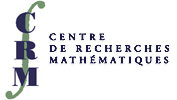 |
|
||||
[PDF]
- JAMES ARTHUR, University of Toronto
What the proof of the Fundamental Lemma gives us [PDF] -
The recent proof of the Fundamental Lemma by Ngo Bau Chau is a breakthrough in the theory of automorphic forms and the Langlands programme. It is the culmination of work carried out by a number of mathematicians over the past thirty years. We shall try to motivate the origins of the problem in the trace formula, and to say something of the history of its proof. We shall then describe how its resolution opens the way for progress on the representations of classical groups, the theory of Shimura varieties, and the principle of functoriality.
- ONÉSIMO HERNÁNDEZ-LERMA, Mathematics Department, CINVESTAV-IPN, A. Postal 14-740, Mexico, D.F. 07000, Mexico
Topics on Dynamic Games [PDF] -
A game is a mathematical model of conflict or bargaining between rational decision-makers. Game theory is a very active field of research partly because of its intrinsic mathematical beauty, and partly because it has proven to be very useful to understand situations of conflict and cooperation in economics, engineering, ecology, and many other areas. This talk is about dynamic games, that is, games in which the state behaves as a discrete or continuous time, possibly stochastic, dynamical system. We survey results on both cooperative and noncooperative games, and some important special cases such as compromise solutions, bargaining games, zero-sum games, and games against nature, also known as minimax or worst-case control problems.
- NIKY KAMRAN, McGill University, Department of Mathematics and Statistics
Wave equations in Kerr geometry [PDF] -
The Kerr metric is a two-parameter family of solutions of the Einstein vacuum field equations which describes the outer space-time geometry of a rotating black hole in equilibrium. Its importance in General Relativity stems from the black hole uniqueness theorems of Israel and Carter which characterize it as the unique set of solutions to the boundary value problem corresponding to black hole equilibrium states. The geometric properties of the Kerr metric have been described by Chandrasekhar as "having the aura of the miraculous", and have opened the door to the study from a rigorous mathematical perspective the long time dynamics of waves in Kerr geometry, as well as the phenomenon of super-radiance. I will review some of the results obtained on these questions in collaboration with Felix Finster, Joel Smoller and Shing-Tung Yau, and I will also indicate a number of open problems and perspectives.
- RACHEL KUSKE, UBC
Noise-driven order via multiple scales [PDF] -
Transient or unstable behavior is often ignored in considering long time dynamics in the deterministic world. However, stochastic effects can change the picture dramatically, so that apparently stabilized transients can dominate the long range behavior. This talk will show how this theme appears in seemingly unrelated different applications, including delay-driven vibrations and infectious disease. Some canonical models are compared, illustrating how hidden time scales play an important role in noise-driven regular behavior, such as coherent oscillations, synchronization, and even quiescence. Different perspectives on coherence resonance show that the order in these models can be attributed to transients "stabilized" by stochastic effects, suggesting a new analysis on reduced models to better understand and predict these phenomena.
- JOSE SEADE, UNAM-Cuernavaca
Foliations with Bott-Morse Singularities [PDF] -
This talk will be about joint work with Bruno Scardua (Brazil) on codimension one foliations on oriented smooth manifolds having a singular locus where the foliation is locally defined by a Bott-Morse function. Examples of such foliations arise, for instance, by considering the fibers of a Morse function f on a smooth manifold M and their liftings to manifolds which are fiber bundles over M. Another class of examples of such foliations arises by looking at cohomogeneity 1 actions of compact Lie groups on smooth manifolds having exceptional orbits. There are many other ways how foliations with Bott-Morse singularities arise.
We show how the classical theory for non-singular foliations, such as Reeb's stability theorems, extends to singular foliations of this type. In the particular case when all the singularities are transversally centers, our stability theorem yields to a topological characterization of all such foliations. We thus get a theorem that unifies the classical theorem of Reeb, that a manifold with a Morse foliation with only center-type singularities must be the sphere, and the well-known theorem that a cohomogeneity 1 action of a compact Lie group having exceptional orbits has exactly two such orbits and the orbit space is the interval.
We also prove a stability theorem for Bott-Morse foliations with saddle-singularities and various topological consequences of it.
- ALBERTO VERJOVSKY, Instituto de Matemáticas, Unidad Cuernavaca, Universidad Nacional Autónoma de México
Wild knots in higher dimensions as limit sets of Kleinian groups [PDF] -
In this talk we describe how to construct infinitely many wild knots, Sn ® Sn+2, for n = 2,3,4 and 5, each of which is a limit set of a geometrically finite Kleinian group G acting conformally on Sn+2. We also describe some of their properties.






